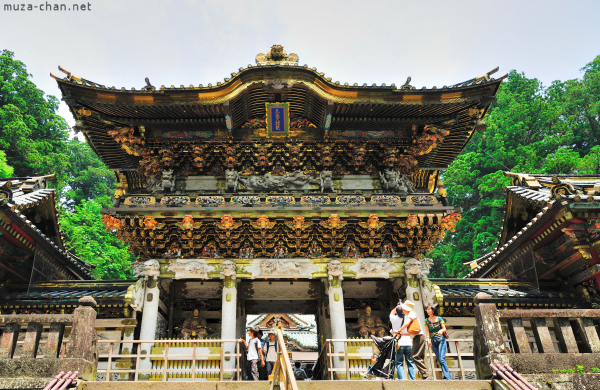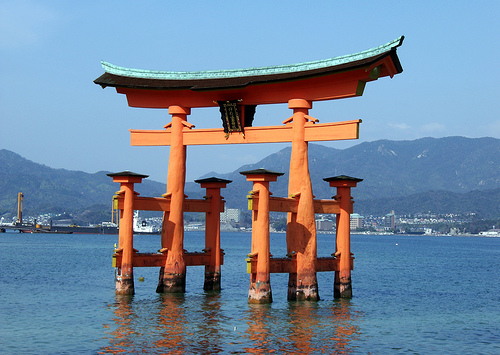
The Toshogu Shrine at Nikko
Nikko Toshogu; Futarasan Jinja; Kamigamo Shrine; Shimogamo Shrine; Uji Shrine; Kasuga Shrine; Kumano Sanzan (Hongu, Hayatama and Nachi Taisha); Itsukushima Shrine; Sonohyan Shrine and Sefa Utaki. What do they all have in common – they are all World Heritage sites. (They’re ordered here from north to south.) [More recently, I’ve discovered that Yoshino has three shrines listed in its World Heritage citation, namely Yoshimizu Shrine, Yoshino Mikimaru Shrine, and Kinpu Shrine. See here for a report.]
There are many shrines that have won the Unesco stamp of approval for being of ‘outstanding universal value’, yet some are very obscure indeed. It’s of note too how few of the national and imperial ranked shrines there are. No Ise or Izumo. No Meiji Shrine. Yet the relatively obscure Uji Shrine gets in there. And who has heard of Sonohyan Shrine? What’s going on?

Opening in the rocks at Sefa Utaki
One key to understanding the oddity of selection is that most of the shrines are part of a larger locale. Nikko Toshogu and Futarasan Jinja are part of the Nikko complex. Kasuga Shrine is counted among the “Historic Mountains of Ancient Nara”. The Kumano Sanzan are in the “Sacred Sites and Pilgrimage Routes of the Kii Mountains”. Kamigamo, Shimogamo and Uji are included in the “Historic Monuments of Ancient Kyoto” (Uji Shrine has the oldest standing shrine building in Japan).
Sonohyan Shrine and Sefa Utaki are rather special, as they belong to “Gusuku Sites and Related Properties of the Kingdom of Ryukyu”. In other words they’re part of the traditional Okinawan religion rather than being Shinto. Both are centred around natural phenomenon, in one case a wood and in the other a rock cliff.
Only one shrine is listed as a World Heritage Site in its own right, so a roll of the drums, please, for Itsukushima Shrine. The picturesque setting of the seaside shrine is seen as quintessentially Japanese, and the architecture is highly esteemed. The World Heritage citation quoted below explains what makes the shrine so special… (the full citation can be seen here: http://whc.unesco.org/en/list/776).
The island of Itsukushima, in the Seto Inland sea, has been a holy place of Shintoism since the earliest times. The first shrine buildings here were probably erected in the 6th century. The present shrine dates from the 12th century and the harmoniously arranged buildings reveal great artistic and technical skill. The shrine plays on the contrasts in colour and form between mountains and sea and illustrates the Japanese concept of scenic beauty, which combines nature and human creativity.
The Committee decided to inscribe the nominated property on the basis of cultural criteria (i), (ii), (iv) and (vi) as the supreme example of this form of religious centre, setting traditional architecture of great artistic and technical merit against a dramatic natural background and thereby creating a work of art of incomparable physical beauty.

The torii of Itsukushima at high tide

Leave a Reply